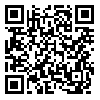Mon, Dec 22, 2025
[Archive]
Volume 34, Issue 1 (2-2020)
Med J Islam Repub Iran 2020 |
Back to browse issues page
Download citation:
BibTeX | RIS | EndNote | Medlars | ProCite | Reference Manager | RefWorks
Send citation to:



BibTeX | RIS | EndNote | Medlars | ProCite | Reference Manager | RefWorks
Send citation to:
Abdolahi M, Salehi M, Shokatian I, Reiazi R. Artificial intelligence in automatic classification of invasive ductal carcinoma breast cancer in digital pathology images. Med J Islam Repub Iran 2020; 34 (1) :965-973
URL: http://mjiri.iums.ac.ir/article-1-6261-en.html
URL: http://mjiri.iums.ac.ir/article-1-6261-en.html
Department of Medical Physics, School of Medicine, & Medical Image and Signal Processing Research Core, Iran University of Medical Sciences, Tehran, Iran , reiazi.r@iums.ac.ir
Abstract: (2675 Views)
Background: Breast cancer is one of the most causes of death in women. Early diagnosis and detection of Invasive Ductal Carcinoma (IDC) is an important key for the treatment of IDC. Computer-aided approaches have great potential to improve diagnosis accuracy. In this paper, we proposed a deep learning-based method for the automatic classification of IDC in whole slide images (WSI) of breast cancer. Furthermore, different types of deep neural networks training such as training from scratch and transfer learning to classify IDC were evaluated.
Methods: In total, 277524 image patches with 50×50-pixel size form original images were used for model training. In the first method, we train a simple convolutional neural network (named it baseline model) on these images. In the second approach, we used the pre-trained VGG-16 CNN model via feature extraction and fine-tuning for the classification of breast pathology images.
Results: Our baseline model achieved a better result for the automatic classification of IDC in terms of F-measure and accuracy (83%, 85%) in comparison with original paper on this data set and achieved a comparable result with a new study that introduced accepted- rejected pooling layer. Also, transfer learning via feature extraction yielded better results (81%, 81%) in comparison with handcrafted features. Furthermore, transfer learning via feature extraction yielded better classification results in comparison with the baseline model.
Conclusion: The experimental results demonstrate that using deep learning approaches yielded better results in comparison with handcrafted features. Also, using transfer learning in histopathology image analysis yielded significant results in comparison with training from scratch in much less time.
Methods: In total, 277524 image patches with 50×50-pixel size form original images were used for model training. In the first method, we train a simple convolutional neural network (named it baseline model) on these images. In the second approach, we used the pre-trained VGG-16 CNN model via feature extraction and fine-tuning for the classification of breast pathology images.
Results: Our baseline model achieved a better result for the automatic classification of IDC in terms of F-measure and accuracy (83%, 85%) in comparison with original paper on this data set and achieved a comparable result with a new study that introduced accepted- rejected pooling layer. Also, transfer learning via feature extraction yielded better results (81%, 81%) in comparison with handcrafted features. Furthermore, transfer learning via feature extraction yielded better classification results in comparison with the baseline model.
Conclusion: The experimental results demonstrate that using deep learning approaches yielded better results in comparison with handcrafted features. Also, using transfer learning in histopathology image analysis yielded significant results in comparison with training from scratch in much less time.
Keywords: Invasive ductal carcinoma, Breast cancer, Artificial intelligence, Convolutional neural networks, Deep learning, Digital pathology
Type of Study: Original Research |
Subject:
Medical Physics
Send email to the article author
| Rights and permissions | |
 |
This work is licensed under a Creative Commons Attribution-NonCommercial 4.0 International License. |








